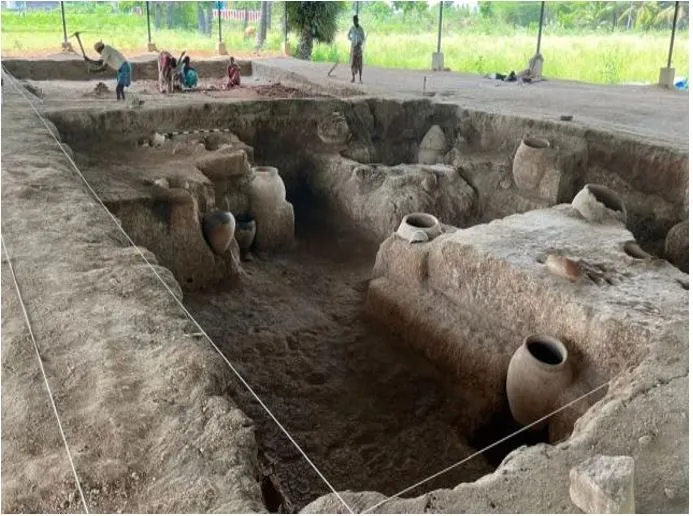

26th May 2025 (13 Topics)
Context
Amarnath Ramakrishna, the lead archaeologist of the Keeladi excavations, has declined the ASI’s 2025 request to revise his 2023 final report. The ASI had questioned the proposed early dating of the site (8th–5th century BCE), seeking corrections and reassessment. Ramakrishna defended the original findings, citing established stratigraphy, AMS dating, and procedural integrity.
Keeladi Excavation – Archaeological Significance:
- Location: Keeladi (also spelled Keezhadi), near Sivaganga district, Tamil Nadu.
- Associated Culture: Sangam Age urban settlement; potential continuity with Iron Age civilization of South India.
- Major Findings:
- Over 13,000 artefacts including pottery, graffiti, inscriptions, iron tools, spindle whorls, and ornaments.
- AMS (Accelerator Mass Spectrometry) dating from carbon samples indicating habitation as early as 8th century BCE.
- Evidence of urban planning, literacy, and industrial activity (e.g., weaving and bead-making).

Chronological Contention:
- Excavator’s claim: Keeladi's cultural layers date back to 8th–5th century BCE, based on:
- Stratigraphy, material culture, and AMS dating.
- ASI’s objection (2025): Suggested a conservative dating of pre-300 BCE; raised concerns about nomenclature and periodization.
Institutional Dispute:
- Archaeologist's stance: Defended report's integrity, methodology, and chronology; offered to rectify only minor omissions (e.g., missing layer numbers).
- ASI's demand: Sought a re-examination and corrections citing expert feedback, triggering concern among independent historians about potential political dilution of early Tamil urban history.
|
Q. With reference to the difference between the culture of Rigvedic Aryans and Indus Valley people, which of the following statements is/are correct? (2017)
Select the correct answer using the code given below:
|

